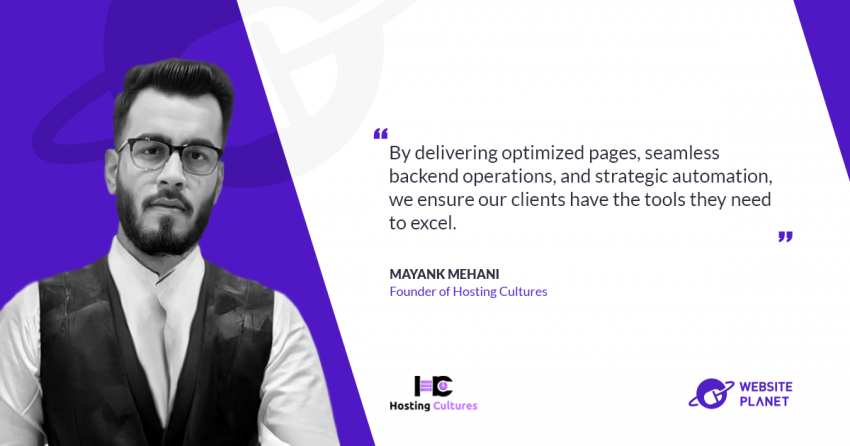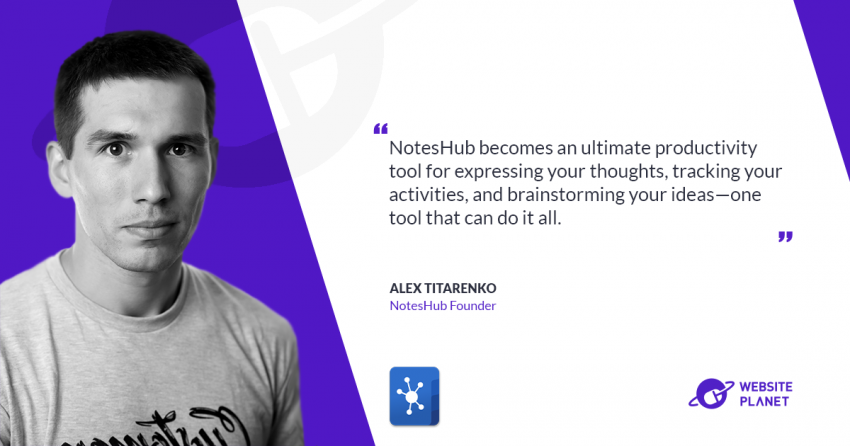Design Rooster began as an unexpected journey, evolving from Matthew Carusi’s initial studies in video game design to a thriving branding and marketing agency.
In an interview with
Website Planet, Matthew shared how the agency, founded in 2015, derives its name from a childhood nickname, reflecting his mission to stand out with creativity and authenticity. Over the years, Design Rooster has grown into a versatile agency, offering tailored solutions to diverse clients across industries.
Rooted in a philosophy of uniqueness and collaboration, the agency continues to craft compelling digital identities that leave lasting impressions.
What inspired the creation of Design Rooster, and how has the agency evolved over time?
Initially, I studied video game design and development in post-secondary school. My background is actually in that field. It’s funny how you can spend four years in school thinking that’s what you want to do, only to realize your path lies elsewhere. Eventually, I moved in a different direction and started freelancing in marketing, design, and branding. One thing led to another, and I began building up more clients.
In 2015, I decided to officially brand my agency, and that’s how Design Rooster was born. The name itself came from a nickname I had growing up—“Rooster”—inspired by a specific hairstyle I used to have. It took some time to finalize the logo, but we ended up with something meaningful and unique, reflecting my personal connection to the name. I wanted to stray away from generic or overly common names and create something that truly stood out.
This philosophy of being unique also influences the way we approach our work and processes. Over time, the agency has evolved significantly. I love being in this industry—it’s rewarding to offer diverse services and learn about different businesses. Today, we work with a wide range of clients, from professional services to manufacturing and product brands. Our skill set is incredibly diverse, and we’re open to working with anyone who values quality and creativity.
How do you approach developing unique digital identities for your clients?
Great question! It all starts with a thorough strategy session. While clients often come to us with a vision for what they want to achieve, that vision might not always align with the best course of action. We make it a priority to involve them as much as possible, but a solid strategy is essential for any branding exercise.
One key step is ensuring that the brand name or identity they’re considering is viable. This includes checking its availability through Google searches, domain properties, and social media platforms. If the name or identity isn’t available, it can limit how effectively we can market it in the future.
Ultimately, our approach revolves around evaluating whether the proposed identity positions the client well for long-term brand development and growth.
Can you share a recent project that highlights your expertise in design and advertising?
Certainly! One of our most recent projects was a full brand overhaul and website design for a custom home and interior design company called Distinctively Designed Interiors. They had a well-established presence locally, but their brand was a bit outdated. We worked to transform their identity into something modern, sleek, and elegant, giving them a fresh, professional look.
In addition to redesigning their branding, we also built out their entire digital presence. Previously, they had no digital footprint, but now they have a strong online presence, complete with a new website, signage, and print materials. We also captured some of their stunning projects through photography and video.
This project was a great example of how we can take a local business with a reputable but somewhat dated brand and elevate it to a much larger scale, positioning it as a more professional, high-end brand ready for greater success.
What role does client collaboration play in your design process?
Client collaboration is essential because, ultimately, it’s their vision that drives the project. Our process is a bit of a balancing act. Some clients prefer to step back and let us take the lead, trusting us to handle the details. Even in these cases, we still ensure they’re involved to some extent because it’s their brand and vision at stake.
On the other hand, some clients have a clear idea of what they want. In these cases, we work closely with them, but we also ensure their vision aligns with industry standards and brand strategy. While we encourage them to lead with their vision, it’s our job to guide them and solidify that vision into something practical and effective.
In short, collaboration is key, and we always work together strategically to bring the client’s vision to life in the best possible way.
How do you ensure that your designs effectively communicate a brand’s message?
Ensuring a brand’s message is effectively communicated comes down to aligning with industry-specific goals and aspirations for the business. It’s crucial that everything we create, from branding to digital assets, consistently speaks the same language when marketed. I always tell clients that if we design a brand with a particular tone, feel, and aesthetic, all their marketing materials—whether it’s print collateral, social media, or website content—need to reflect that same message.
Consistency is key, and it starts with defining a clear strategy and communication style for the brand. The tone we establish during brand development needs to carry through every touchpoint, including the website, social media, and any other marketing efforts. Everything must be aligned to ensure the brand’s message is clear and cohesive.
What trends in digital design and advertising are you currently excited about?
One trend I’m excited about is the shift towards a balance between minimalism and more detailed branding. Right now, minimalism is everywhere, with many rebrands moving towards flat, simplified logos. While I appreciate some aspects of this, I also think it’s a bit of a short-term trend. Eventually, I believe we’ll find a happy medium between ultra-minimalism and the more detailed designs of the past.
For example, the Jaguar rebrand is a good case study. Whether you like it or not, it went from a rich, detailed history to a very modern, minimal logo, which, in my opinion, loses some of the essence of the brand’s roots. This trend is being followed by many businesses, but I don’t believe it’s always the best fit. I’m looking forward to seeing how this balance between the two styles will evolve, as it’s bound to create more thoughtful, impactful designs.
Find out more at:
www.designrooster.com













